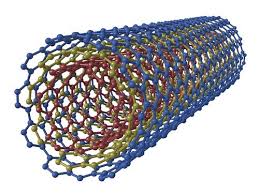Structural, electronic properties of Fulleren C90 in single-walled carbon nanotubes (SWCNT) based on nano-microelectronics PHD (educational-research doctorate)
Researcher and author PhD student : Afshin Rashid
Note: There are structural, electronic properties of fullerenes in single-walled carbon nanotubes (SWCNTs) based on the various computational methods of fullerenes C90 used to understand the different properties of carbon nanostructures .
The importance of using computational methods in exploring different sizes of Fulleren C90 and their isomers is important. There is also a relationship between the local curvature and reactivity of flawless carbon nanotubes and the single-walled wall of surviving hydrogen and fluorine elements on the outer surface of SWCNTs using carbon nanoparticles and C90 and graphene.
Semiconductor carbon nanotubes that are larger in diameter have better efficiency in electronic equipment. Selective scattering of SWCNTs using aromatics Dense benzoids such as pentacene, anthracene, and quaterylene have been propagated. Large crystal nanotubes can be separated using dense benzoid aromatics, while small crystal nanotubes are separated by poly-perylene derivatives. In addition, by controlling the dispersion-separation process, the metal nanotubes and then the semiconductor nanotubes can be separated. Select the right SWCNTs to separate the right or left. Crystal selectivity is optimized by controlling the two-way angle between porphyrins. Interestingly, diporphyrin molecules can be right-handed or left-handed Before doing so, detect the electronic splitting by correcting the error of the carbon network in the space of carbon nanotubes SWCNT and SWCNTs. Or they can partially separate the SWCNT and SWCNTs enantiomers. This ensures that aromatic nanomolecules with higher reliability separate chiral nanotubes.
Conclusion :
The structural, electronic properties of fullerenes are present in single-walled carbon nanotubes (SWCNTs) based on various computational methods of fullerenes C90 that have been used to understand the different properties of carbon nanostructures .
Author: PhD Student ( Afshin Rashid)




